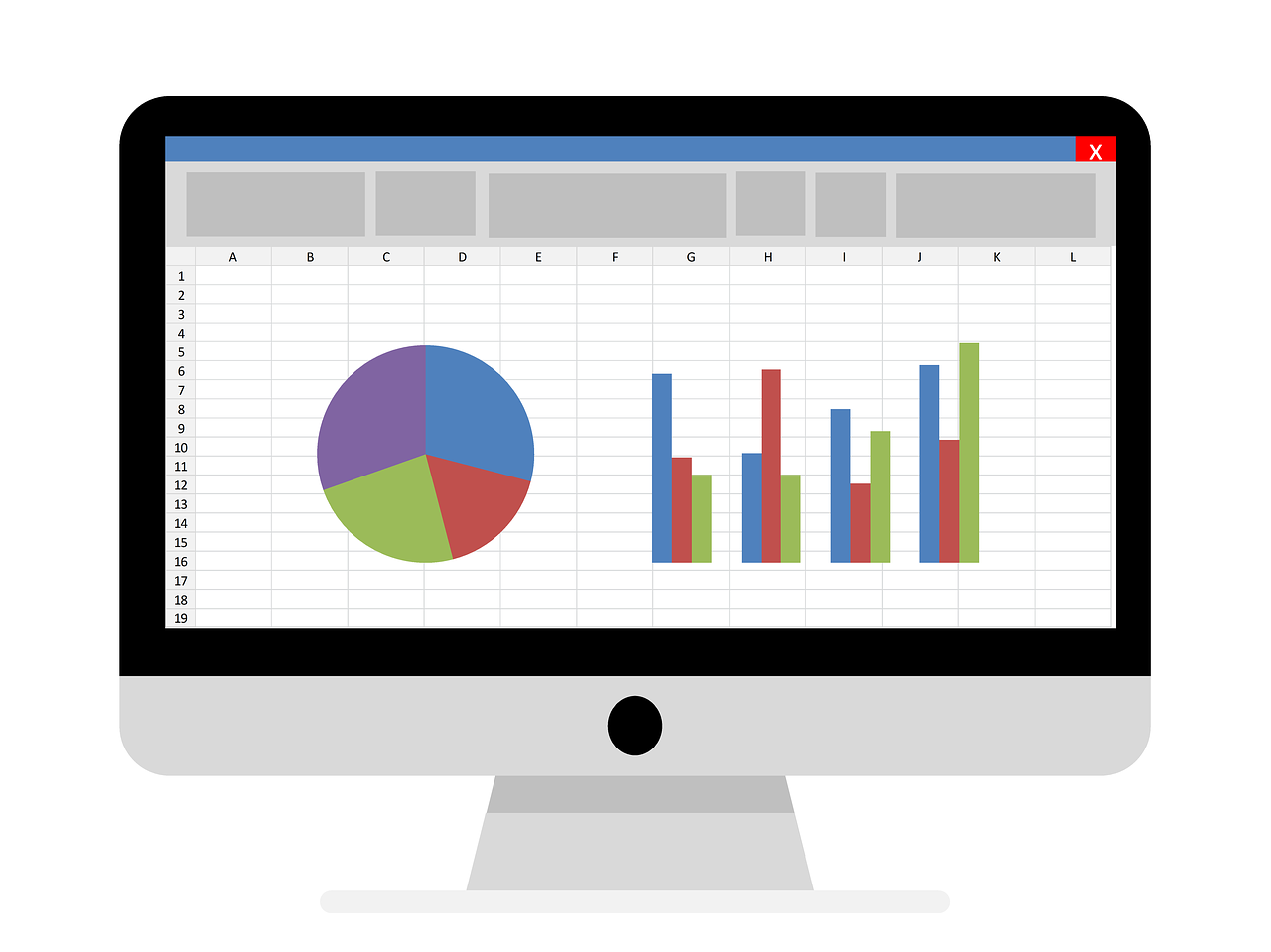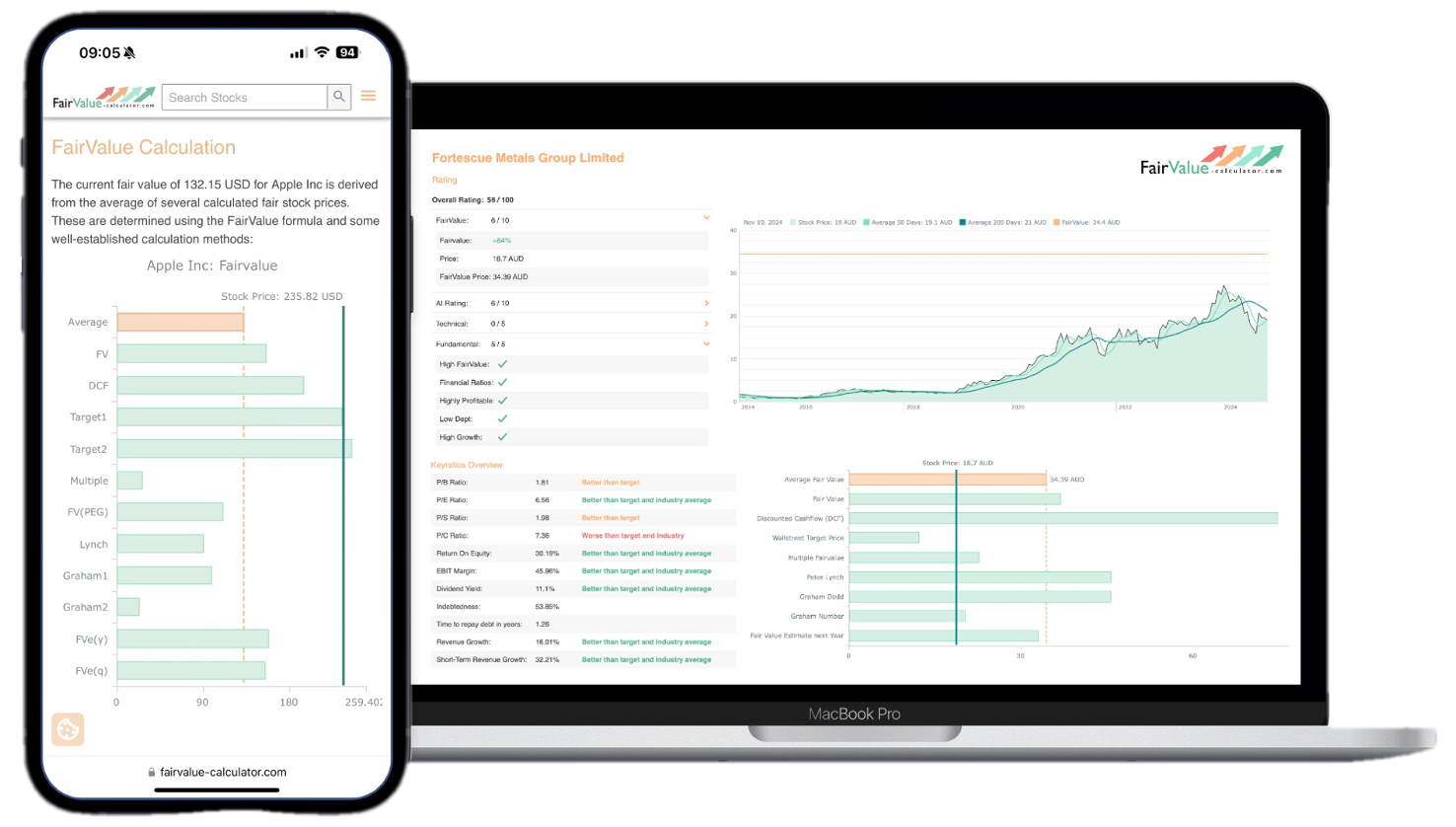In today’s complex investment landscape, having access to professional-grade analysis tools can mean the difference between mediocre returns and market-beating performance. While institutional investors spend millions on sophisticated valuation software, individual investors can now access powerful free stock valuation calculator tools that level the playing field and provide the analytical edge needed to identify undervalued opportunities.
The democratization of financial analysis through outperform stock market tool platforms has created unprecedented opportunities for retail investors to apply the same rigorous valuation methods used by Wall Street professionals. By mastering these investment calculator free resources, you can build a systematic approach to stock selection that consistently identifies opportunities others miss.
This comprehensive guide will show you exactly how to leverage free fair value calculators to build a portfolio that outperforms broad market indices while managing risk effectively. Whether you’re a beginner looking to make your first calculated investment decisions or an experienced investor seeking to refine your analysis process, these tools and strategies will enhance your investment success.
Explore our most popular stock fair value calculators to find opportunities where the market price is lower than the true value.
- Peter Lynch Fair Value – Combines growth with valuation using the PEG ratio. A favorite among growth investors.
- Buffett Intrinsic Value Calculator – Based on Warren Buffett’s long-term DCF approach to determine business value.
- Buffett Fair Value Model – Simplified version of his logic with margin of safety baked in.
- Graham & Dodd Fair Value – Uses conservative earnings-based valuation from classic value investing theory.
- Intrinsic vs. Extrinsic Value – Learn the core difference between what a company’s really worth and what others pay.
- Intrinsic Value Calculator – A general tool to estimate the true value of a stock, based on earnings potential.
- Fama-French Model – For advanced users: Quantifies expected return using size, value and market risk.
- Discount Rate Calculator – Helps estimate the proper rate to use in any DCF-based valuation model.
The Power of Fair Value Analysis in Modern Investing
Fair value analysis has become the foundation of successful investing because it provides objective, data-driven insights that cut through market noise and emotional decision-making. Unlike technical analysis, which focuses on price patterns and momentum, fair value analysis examines the fundamental worth of companies based on their actual business performance and future prospects.
Professional-grade analysis accessibility represents a revolutionary shift in retail investing. Tools that were once exclusive to hedge funds and institutional investors are now available to anyone with an internet connection. This democratization means that individual investors can now perform the same level of analysis that was previously reserved for Wall Street professionals.
💡 Discover Powerful Investing Tools
Stop guessing – start investing with confidence. Our Fair Value Stock Calculators help you uncover hidden value in stocks using time-tested methods like Discounted Cash Flow (DCF), Benjamin Graham’s valuation principles, Peter Lynch’s PEG ratio, and our own AI-powered Super Fair Value formula. Designed for clarity, speed, and precision, these tools turn complex valuation models into simple, actionable insights – even for beginners.
Learn More About the Tools →Systematic decision-making frameworks emerge naturally from using fair value calculators. Rather than relying on gut feelings, hot tips, or market sentiment, investors can make decisions based on quantitative analysis and objective criteria. This systematic approach helps eliminate emotional biases that often lead to poor investment decisions.
Risk management enhancement occurs because fair value analysis provides clear benchmarks for determining when stocks are overvalued or undervalued. This information helps investors avoid overpaying for popular stocks while identifying genuine opportunities that the market has overlooked.
Portfolio construction improvements result from having accurate valuations for multiple investment candidates. Instead of randomly selecting stocks or following popular recommendations, investors can build portfolios based on the best risk-adjusted opportunities available at any given time.
The mathematical foundation of fair value analysis provides confidence that investment decisions are based on solid reasoning rather than speculation. This foundation becomes particularly valuable during volatile market periods when emotions run high and clear thinking becomes difficult.
Essential Features of Effective Free Stock Valuation Calculators
Not all free valuation tools are created equal. Understanding the key features that separate professional-grade calculators from basic tools will help you choose resources that actually improve your investment decisions.
Discounted Cash Flow (DCF) modeling capabilities form the cornerstone of professional valuation analysis. The best free calculators allow you to input multiple years of projected cash flows, adjust discount rates based on company-specific risk factors, and calculate terminal values using various growth assumptions. These tools should also provide sensitivity analysis to show how changes in key assumptions affect valuation estimates.
Multiple valuation methodologies in a single platform provide cross-validation of investment ideas. Comprehensive calculators incorporate DCF analysis, comparable company analysis, asset-based valuations, and dividend discount models. When multiple methodologies point to similar valuations, confidence in the analysis increases significantly.
Automatic data integration saves time and reduces errors by pulling financial data directly from reliable sources. The best tools connect to financial databases to populate income statements, balance sheets, and cash flow statements automatically, eliminating the need for manual data entry and reducing the risk of calculation errors.
Scenario analysis functionality helps investors understand how different economic conditions or company-specific developments might affect valuations. Professional-grade calculators allow users to model best-case, worst-case, and base-case scenarios to understand the range of possible outcomes for any investment.
Historical comparison features provide context by showing how current valuations compare to historical averages for both specific companies and industry peer groups. This historical perspective helps investors identify when stocks are trading at unusual premiums or discounts relative to their long-term averages.
User-friendly interfaces make complex analysis accessible to investors without advanced finance backgrounds. The best calculators present results in clear, understandable formats with explanations of key metrics and assumptions. Visual representations of data through charts and graphs help users quickly identify trends and patterns.
Step-by-Step Guide to Using Free Fair Value Calculators
Mastering fair value analysis requires a systematic approach that ensures consistent, accurate results. Following these steps will help you maximize the value of free calculation tools while avoiding common pitfalls that can lead to incorrect conclusions.
Step 1: Data Collection and Verification
Start by gathering comprehensive financial data for your target company. While many calculators auto-populate this information, understanding the source data ensures accuracy and helps you identify potential red flags. Focus on the most recent annual and quarterly financial statements, including income statements, balance sheets, and cash flow statements.
Verify that revenue figures are consistent across different sources and understand any one-time charges or extraordinary items that might distort normal business performance. Pay particular attention to depreciation and amortization expenses, capital expenditures, and working capital changes, as these items significantly impact free cash flow calculations.
Step 2: Industry and Peer Analysis
Before diving into company-specific calculations, understand the industry context and identify appropriate peer companies for comparison. Different industries have vastly different normal valuation ranges, growth rates, and risk profiles. Technology companies might justifiably trade at higher multiples than utilities, while cyclical industries require different analytical approaches than defensive sectors.
Identify 3-5 comparable companies that operate in similar markets, have similar business models, and face similar competitive pressures. These peers will provide benchmarks for evaluating whether your target company’s valuation appears reasonable relative to alternatives.
Step 3: Financial Projections and Assumptions
Develop realistic projections for key financial metrics over the next 5-10 years. This process requires careful analysis of historical performance, industry trends, competitive positioning, and macroeconomic factors. Conservative assumptions generally produce more reliable results than optimistic projections.
Focus on projecting free cash flow, which represents the actual cash available to shareholders after all necessary business investments. Consider factors like revenue growth rates, profit margin trends, capital expenditure requirements, and working capital needs. Document your assumptions clearly so you can revisit and adjust them as new information becomes available.
Step 4: Discount Rate Selection
Choose an appropriate discount rate that reflects the risk profile of your investment. The discount rate should account for the risk-free rate of return, market risk premium, and company-specific risk factors. Higher-risk companies require higher discount rates, which result in lower present values for future cash flows.
Consider using the company’s weighted average cost of capital (WACC) as a starting point, then adjust for factors like business model stability, competitive positioning, financial leverage, and management quality. Many free calculators provide guidance on discount rate selection based on industry and company characteristics.
Step 5: Sensitivity Analysis and Scenario Planning
Test how sensitive your valuation is to changes in key assumptions. Small changes in growth rates, discount rates, or terminal values can significantly impact final valuations. Understanding this sensitivity helps you assess the reliability of your analysis and identify the most critical assumptions driving your results.
Create multiple scenarios representing different possible futures for the company and industry. This approach helps you understand the range of possible outcomes and make more informed decisions about position sizing and risk management.
Step 6: Results Interpretation and Decision Making
Compare your calculated fair value to the current market price to identify potential opportunities. Generally, look for companies trading at least 10-20% below your calculated fair value to provide a margin of safety that accounts for estimation errors and unforeseen risks.
Consider the quality of the business, management effectiveness, competitive positioning, and industry outlook alongside your quantitative analysis. The best investment opportunities typically combine attractive valuations with strong business fundamentals and capable management teams.
Advanced Strategies for Market Outperformance
Using free fair value calculators effectively requires more than just running calculations. Sophisticated investors develop systematic approaches that maximize the probability of identifying winning investments while minimizing risks.
Portfolio screening and ranking systems help investors efficiently evaluate multiple opportunities and allocate capital to the most attractive options. Develop criteria for ranking potential investments based on factors like upside potential, downside risk, business quality, and conviction level. This systematic approach ensures that you focus your limited time and capital on the most promising opportunities.
Timing optimization techniques can significantly improve returns by helping you enter and exit positions at advantageous prices. While fair value analysis identifies which stocks to buy, market timing considerations can improve when to buy them. Look for technical support levels, insider buying activity, or positive news catalysts that might accelerate the convergence of market price to fair value.
Risk-adjusted position sizing based on conviction levels and risk assessments helps optimize portfolio construction. Investments with higher conviction levels and lower risk profiles might warrant larger position sizes, while speculative opportunities might receive smaller allocations regardless of their potential upside.
Regular revaluation processes ensure that your portfolio remains aligned with current fair values as business fundamentals and market conditions change. Set up systematic review schedules to update your valuations quarterly or after significant company or industry developments. This discipline helps you identify when to add to positions, trim holdings, or exit investments entirely.
Sector rotation strategies based on relative valuations can enhance returns by identifying when entire industry groups become attractive or overvalued. Use your valuation skills to identify sectors where multiple companies appear undervalued relative to their historical norms or peer groups.
Common Mistakes to Avoid
Even with access to sophisticated free tools, investors can still make errors that undermine their results. Understanding these common pitfalls helps you maintain analytical discipline and avoid costly mistakes.
Over-reliance on single metrics represents one of the most common errors in valuation analysis. While price-to-earnings ratios or price-to-book values provide useful information, they don’t tell the complete story about a company’s investment attractiveness. Always use multiple valuation methodologies and consider qualitative factors alongside quantitative metrics.
Ignoring business quality in favor of cheap valuations can lead to investments in companies with permanently impaired prospects. A stock might appear cheap for good reasons, such as declining competitive positioning, obsolete business models, or poor management. Always investigate why a stock appears undervalued before assuming it represents a good opportunity.
Unrealistic growth assumptions often lead to inflated valuations and poor investment decisions. Be particularly skeptical of projections that assume companies will maintain high growth rates indefinitely or that ignore competitive pressures and market saturation effects. Conservative assumptions generally produce more reliable results than optimistic projections.
Neglecting macroeconomic factors can result in valuations that don’t account for changing interest rates, inflation expectations, or economic cycles. Different types of companies are affected differently by macroeconomic changes, and your analysis should reflect these considerations.
Emotional decision-making despite having objective analysis can undermine the benefits of using valuation tools. Stick to your analytical framework even when market sentiment or popular opinion suggests different conclusions. The whole point of systematic analysis is to remove emotion from investment decisions.
Building Your Investment Research Process
Developing a systematic research process maximizes the value of free fair value calculators while ensuring consistent, high-quality analysis across all your investment decisions.
Create standardized checklists that cover all aspects of your investment analysis, from initial screening through final decision-making. These checklists ensure that you don’t overlook important factors and maintain consistency across different investments. Include items like financial statement quality, management assessment, competitive positioning, and valuation metrics.
Develop information sources that provide reliable, timely data for your analysis. Identify the best free sources for financial statements, industry research, management commentary, and competitive intelligence. Having consistent, high-quality information inputs improves the reliability of your analysis outputs.
Establish decision criteria that define when you’ll buy, hold, or sell investments based on your analysis. These criteria should specify minimum upside requirements, maximum risk tolerances, and conditions that would trigger position changes. Having clear criteria helps remove emotion from decision-making and ensures consistent application of your investment philosophy.
Track performance systematically to identify what’s working in your approach and what needs improvement. Keep detailed records of your investment decisions, including your analysis, assumptions, and reasoning. Regular performance reviews help you learn from both successes and mistakes.
Continuous learning frameworks help you stay current with new analysis techniques, market developments, and tool improvements. The investment landscape evolves constantly, and maintaining your analytical edge requires ongoing education and skill development.
Sector-Specific Application Strategies
Different sectors require different approaches to fair value analysis, and understanding these nuances improves the accuracy of your valuations and investment decisions.
Technology sector analysis requires special attention to metrics like platform effects, network values, and intellectual property assets that don’t appear on traditional balance sheets. Free calculators that incorporate these factors provide more accurate valuations for technology companies than those relying solely on traditional financial metrics.
Financial services valuations depend heavily on regulatory capital requirements, loan quality, and interest rate sensitivity. Look for calculators that can model these sector-specific factors when analyzing banks, insurance companies, and other financial institutions.
Healthcare and pharmaceutical analysis requires understanding of drug development pipelines, regulatory approval processes, and patent expiration impacts. The best tools for these sectors incorporate probability-weighted valuations for development-stage assets and model patent cliff effects.
Energy sector calculations must account for commodity price volatility, reserve quantities and quality, and regulatory environmental requirements. Specialized features for energy companies include reserves-based valuations and commodity price sensitivity analysis.
Real estate investment trusts (REITs) require different analytical approaches focused on funds from operations (FFO), net asset values, and dividend sustainability. Look for calculators that specialize in REIT-specific metrics rather than trying to apply general corporate valuation methods.
Maximizing Returns Through Strategic Implementation
The key to outperforming the market using free fair value calculators lies not just in accurate analysis, but in strategic implementation that maximizes your analytical edge while managing risks effectively.
Opportunity identification systems help you efficiently scan the market for undervalued situations. Develop screening criteria that identify companies trading significantly below their calculated fair values, then focus your detailed analysis on these pre-qualified opportunities. This approach ensures that you spend your time on the most promising situations rather than randomly analyzing stocks.
Portfolio construction optimization uses your valuation work to build portfolios that maximize expected returns while controlling risk. Consider factors like correlation between holdings, sector concentration, and individual position sizes when building your portfolio. The goal is to create a diversified collection of undervalued opportunities that don’t all face the same risks.
Entry and exit timing strategies can significantly impact your returns even when your valuations are accurate. Look for technical support levels, insider buying activity, or positive catalysts that might accelerate the convergence of market price to fair value. Similarly, consider taking profits when stocks reach or exceed your calculated fair values, especially if new opportunities appear more attractive.
Risk management integration ensures that your pursuit of outperformance doesn’t expose you to unacceptable risks. Use position sizing, diversification, and stop-loss strategies to protect your capital while allowing your best ideas to compound over time. The most successful investors focus as much on not losing money as on making money.
Performance monitoring and adjustment helps you learn from your experiences and continuously improve your approach. Track not just your returns, but also the accuracy of your valuations, the success rate of your stock selection, and the effectiveness of your timing decisions. This information helps you identify strengths to leverage and weaknesses to address.
The Future of Free Investment Tools
The landscape of free investment tools continues to evolve rapidly, with new capabilities and features regularly becoming available to retail investors. Understanding these trends helps you stay ahead of the curve and maximize your analytical capabilities.
Artificial intelligence integration is beginning to appear in free valuation tools, providing automated analysis, pattern recognition, and even investment recommendations based on your analytical criteria. These AI-enhanced tools can process vast amounts of data and identify opportunities that might be missed by manual analysis.
Real-time data integration allows for more dynamic analysis that reflects current market conditions and company developments. Instead of relying on quarterly financial statements, newer tools incorporate real-time metrics like social media sentiment, satellite imagery, and alternative data sources that provide earlier indicators of business performance.
Mobile optimization makes sophisticated analysis available anywhere, allowing you to evaluate opportunities and make decisions without being tied to a desktop computer. The best mobile tools maintain full functionality while adapting to smaller screens and touch interfaces.
Community features are emerging that allow investors to share analysis, compare valuations, and collaborate on investment research. These social aspects can enhance your analysis by providing different perspectives and identifying blind spots in your reasoning.
Educational integration helps users learn advanced techniques while using the tools, making sophisticated analysis accessible to investors without formal finance backgrounds. Interactive tutorials, explanation features, and case studies help users understand not just how to use the tools, but why certain approaches work better than others.
Measuring Success and Continuous Improvement
Outperforming the market requires not just good analysis, but also systematic measurement of your results and continuous improvement of your approach.
Performance benchmarking should compare your returns to relevant market indices while adjusting for risk differences. Simply beating the market isn’t enough if you’re taking significantly more risk than the market. Risk-adjusted performance metrics provide a more accurate picture of your investment success.
Analysis accuracy tracking helps you understand how well your valuations predict actual stock performance. Keep records of your fair value calculations and compare them to subsequent stock price movements. This information helps you identify when your analysis is most accurate and when you might need to adjust your approach.
Decision quality assessment focuses on the process behind your investment decisions rather than just the outcomes. Good decisions can still result in poor short-term performance due to market volatility or unforeseen events. Evaluating your decision-making process helps you improve your approach regardless of short-term results.
Continuous learning integration ensures that you stay current with new analysis techniques, market developments, and tool improvements. The investment landscape evolves constantly, and maintaining your analytical edge requires ongoing education and adaptation.
Goal alignment reviews help ensure that your investment approach remains aligned with your financial objectives and risk tolerance. As your circumstances change, your investment strategy should evolve accordingly. Regular reviews help you make necessary adjustments before they become critical.
Conclusion: Building Your Path to Market Outperformance
Using free fair value calculators to outperform the market requires more than just access to good tools. Success depends on developing systematic approaches, maintaining analytical discipline, and continuously improving your skills and processes.
The democratization of sophisticated investment analysis tools has created unprecedented opportunities for individual investors to compete with institutional professionals. By mastering these tools and developing systematic approaches to their use, you can build a sustainable competitive advantage that generates superior long-term returns.
Remember that outperforming the market is a long-term endeavor that requires patience, discipline, and continuous learning. The best investors use periods of underperformance as learning opportunities and maintain confidence in their analytical approaches even when short-term results are disappointing.
The key to success lies in combining accurate analysis with smart implementation, effective risk management, and continuous improvement. Free fair value calculators provide the analytical foundation, but your investment success ultimately depends on how systematically and disciplined you apply these tools to real-world investment decisions.
Start with the fundamentals, develop your analytical skills gradually, and always remember that the goal is not perfect analysis, but rather building a systematic approach that gives you an edge over time. With dedication and the right tools, achieving market-beating returns is not just possible, but probable.
Ready to start your journey toward market outperformance? Try our professional-grade Fair Value Calculator and discover how accurate valuations can transform your investment results. Best of all, it’s completely free and requires no registration.







izmir haber
Hi there to all, for the reason that I am genuinely keen of reading this website’s post to be updated on a regular basis. It carries pleasant stuff.
izmir haberler
Nice post. I learn something totally new and challenging on websites
blog
Awesome! Its genuinely remarkable post, I have got much clear idea regarding from this post
ecom
Good post! We will be linking to this particularly great post on our site. Keep up the great writing